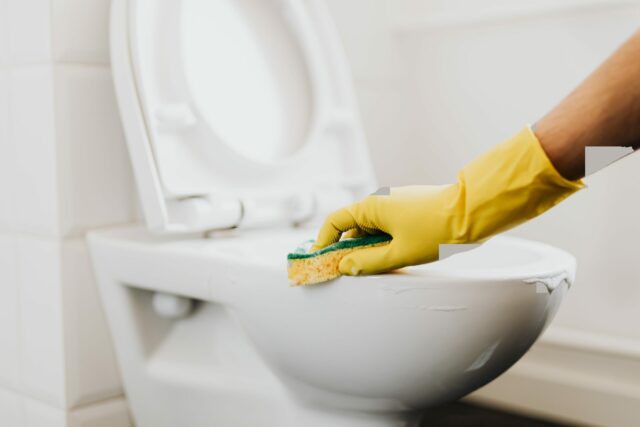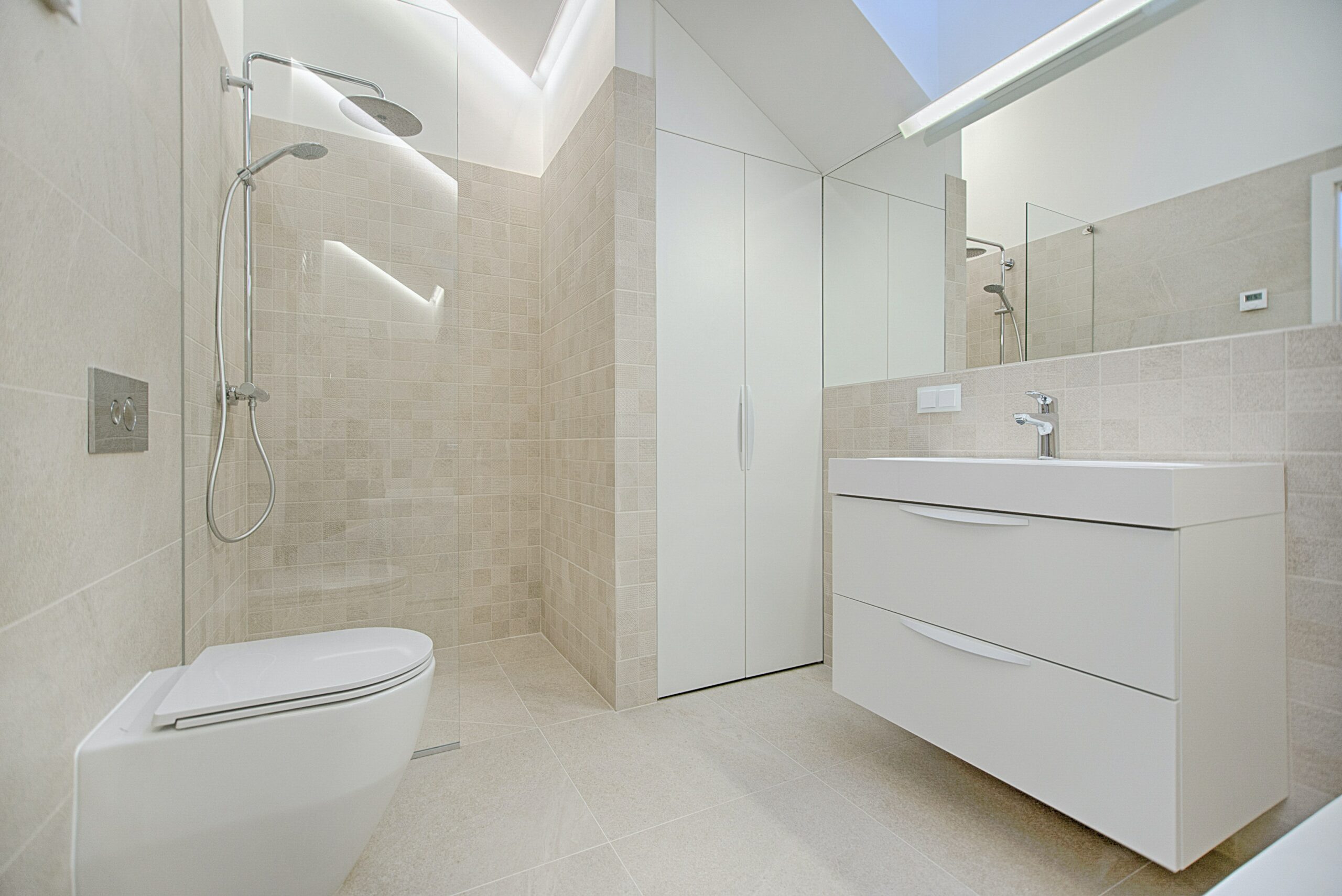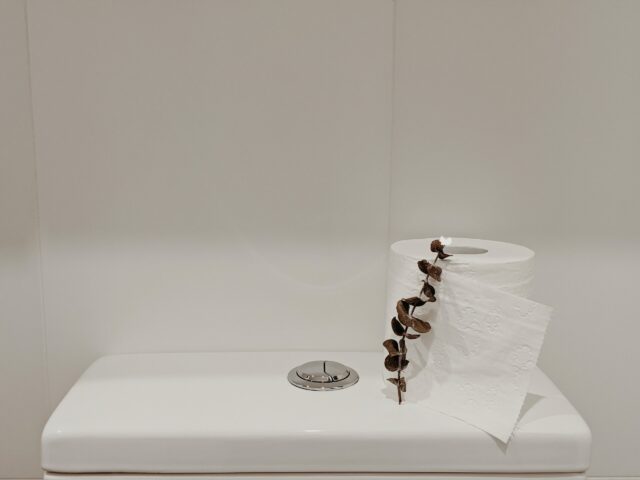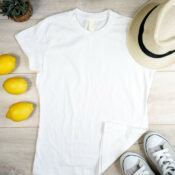Last updated May, 22 2022
Any toilet often used in your house has likely come into contact with some rust. The iron that forms rust is pumped in from outside water sources and sits in your pipes, building up over time and clogging your plumbing as well as leaving ugly rust and water stains. Rusty pipes can also taint your water, leading to orange-brown water that pours out of your sink and shower. Without hard work or preventative action, those rust particles will anchor to your toilet tank and bowl, making them very hard to remove and ruining your bathroom look.

Say Goodbye to Rust Stains with Our Time-Tested Techniques
One of the worst offenders of rust stains is in toilets. Orange-brown rust stains are highly visible and ugly, but they can also prove extremely difficult to remove. It’s important to know exactly how to clean your toilet for an effective and lasting treatment that will remove every trace of the rust your water left behind.
There are a few simple effective methods you can use to get these stains removed without working too hard.
Choose what works best for you…
Method 1.
White distilled Vinegar with baking soda: Close the faucet of the water supply, Drain your toilet tank. Keep the flush lever depressed until the water level inside the bowl empties as much as possible, Pour 1 to 2 cups of white vinegar into your rusted toilet bowl, sprinkle the area with baking soda, and scrub with a ball of crinkled up aluminum foil. Research indicates vinegar can remove most, if not all rust stains within a few hours. For best results, let it sit for 6-7 hours or overnight. The next morning scrub the toilet with a toilet brush, and flush to rinse.
Method 2.
Lemon Juice With Borax Powder: Close the faucet of the water supply, Drain your toilet tank, Pour 1 to 2 cups of Lemon juice into your rusted toilet bowl, Pour Borax Powder into the toilet bowl and stir until the solution becomes a paste. Dip a sponge in the paste and scrub it well, particularly on the stains. Let sits it for a couple of hours before turning the water supply back on. Flush the toilet, and your stains should be gone.
Method 3.
Keep in mind, before you start, make sure the window and door of the bathroom are open to keep the room well ventilated.
Important: Follow the safety instructions carefully, as these products are hazardous if mishandled.
CLR Calcium: Close the faucet of the water supply. Drain your toilet tank, keeping the flush lever depressed until the water level inside the bowl empties as much as possible. Pour 1 to 2 cups of CLR Calcium into your rusted toilet bowl and let it sit for around 15 minutes. Scrub the bowl with a toilet brush to loosen the soil, Turn the water supply back on and flush the toilet.
How to Remove Rust Stains in a Toilet Tank
Why Is The Inside of My Toilet Tank Rusty?
- The water in our homes might have too much iron in it, causing the water to turn brown and eventually rust the inside of your toilet tank.
- Rust could also come through your pipes. If your pipes have rust, your water will have a rusty tint and your tank will eventually turn orange and rusty. (if rusty pipes is your issue, you probably need to replace your pipes, since the rust will return quite fast).
- Usually, the parts inside our toilet tanks are made of plastic and rust resistant material, to avoid rusting of our tanks. If this isn’t the case in your tank, the parts inside your tank might begin to rust and eventually turn the water and walls of the tank rusty.
Whatever your cause for rust in your toilet tank is, we are here to help you get rid of it!
Materials Needed
- White Vinegar
- Naval Jelly
- Pumice Stone
Heavy Rust:
Close the faucet of the water supply.
Drain your toilet tank, keeping the flush lever depressed until the water level inside the bowl empties as much as possible.
Once all water is gone, dip a sponge in naval jelly and rub all rust stains in the tank. Let sit for around fifteen minutes. After letting it sit, fill the tank with water using a pail. Flush the toilet, draining the water and jelly mix.
Pull out a pumice stone and really get to work on scrubbing and scraping remaining rust stains from the interior of your tank. If the stains don’t disappear, apply some more naval jelly and repeat the procedure until you get the desired results.
Finally, open the faucet of the water supply, and flush the toilet to rinse.
Light Rust:
Close the faucet of the water supply. Drain your toilet tank, keeping the flush lever depressed until the water level inside the bowl empties as much as possible.
Fill a spray bottle with vinegar.
Once all water is gone, spray all rust stains with the vinegar. Let sit for fifteen minutes and then grab your pumice stone, begin scrubbing and scraping the remaining rust stains from the interior of your tank. Repeat the procedure until you get the desired results.
Finally, open the faucet of the water supply and flush, draining the vinegar.
These cleaning recipes are thorough and designed to tackle any level of challenging rust stain in your toilet tank. Take on all the challenges of rust stains through our time-tested techniques and put an end to your orange-brown stains.
How to Prevent Rust Stains for Good?
There are a few different ways residents can choose to tackle the problems caused by the rust in their homes
The first is to invest in coated pipes that are resistant to rust build-up. Plumbers specialize in recommending rust-free supplies that will work for your specific home, so you’ll definitely want to contact one for advice on how to redo your home plumbing.
Another good solution is investing in water-conditioning or filtering. Especially if you’re planning on living in your current home or property for a long time, installing filtering or softening hardware is one of the best decisions you can make.
Say goodbye to bad-smelling water, constantly clogged pipes, and itchy, dry skin with softening equipment that gets installed on top of pre-existing plumbing. Water softeners remove problematic and dangerous rust particles at the source, so you won’t have to worry about calcium, iron, and magnesium building up in your home again.








